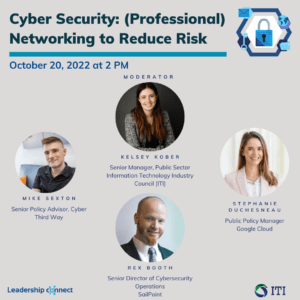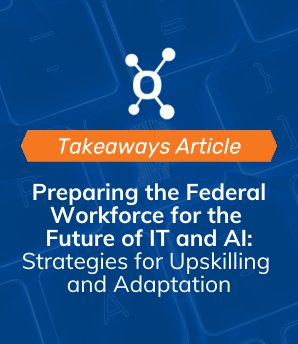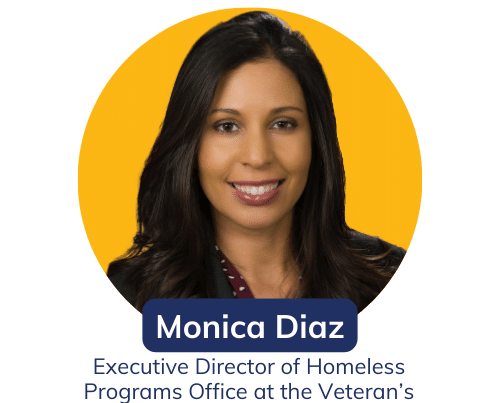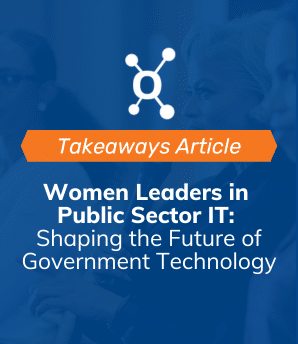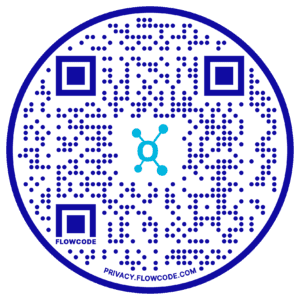Five Takeaways
Cyber Security: (Professional) Networking to Reduce Risk Webinar
Cyber security – daunting as a profession after massive data breaches on major corporations, infrastructure, and more. In our webinar co-hosted with Information Technology Industry Council (ITI), our esteemed panelist took a deeper dive into the cyber world. They shared what it takes to make it in cyber, how companies and the federal government can cause internal changes to empower their organizations, how we can inspire new people, and how generations two see themselves as part of this future in cyber protection.
1. Stop gatekeeping cyber security careers and teach people at younger ages how to get involved, especially in underrepresented communities.
We hear it often from the White House to leading Fortune 1000 companies: DEI needs to be at the forefront of hiring processes. Mike Sexton shared that, especially in tech and cyber, we need to get involved as early as high school to show people from all backgrounds that cyber careers are possible. Organizations like Black Girls Hack are inspiring new generations to get involved early to make an impact for years to come.
2. Death by PowerPoint no more; there’s a shift in how people are taught through reading, networking, and red teaming your company to learn about weak spots and how to move on.
From cyber security videos to PowerPoint presentations, burnout is on the rise for ways to educate teams on what is a risk. Stephanie Duchesneau from Google Cloud highlighted that organizations need to invest in how people learn about cyber security and grow their teams on what it means to be cyber prepared. More than one training or a simple piece of software is needed to protect any organization. She expanded and said it was not a one size fits all approach, and we need to recognize that.
3. Planning needs to be a part of all c-suite conversations on the corporate side, additionally on the federal side.
All our panelists agreed on one key fact: cyber needs to be at the table regularly on the corporate and federal side. Organizations often think technology is the only solution to cyber issues; however, cyber is more than firewalls and tests. Senior people need to actively monitor the threats and risks for their organizations and make it a topic of regular conversation.
4. Leverage relationships and success stories through those relationships to drive change.
Rex Booth, coming from a federal agency background, shared agencies are set up with a cyber operations and recovery program, but each organization should not reinvent the wheel. When you have a connection or relationship that has already found the right technology or created a plan, lean into them, and normalize the front door approach. These relationships help to plan before you need a cyber response.
5. The gap is narrowing between the bad actors in technology capabilities and us — disparate regulations aren’t helping anyone.
When funding comes in yearly without a long-term plan, it is challenging to plan federally or on calendar budgets for a rapidly changing cyber-attack dynamic—focusing on departments or agencies without an overall strategy, leaving gaping holes in the system and leaving the US at risk. Coordinating your team around cyber, there are many options. It’s important to remember you do not have to be a coder to have a cyber mind, and working with your senior leaders will drive the change that is needed in your organization.
In addition to agreeing on the holistic approach, our panelists shared the value of personal and professional networking to build relationships before you need them. Utilizing tools like Leadership Networks can help you identify key influencers and decision-makers by mapping and scoring relationships based on mutual connections.
If you missed our webinar, click here to view it.



